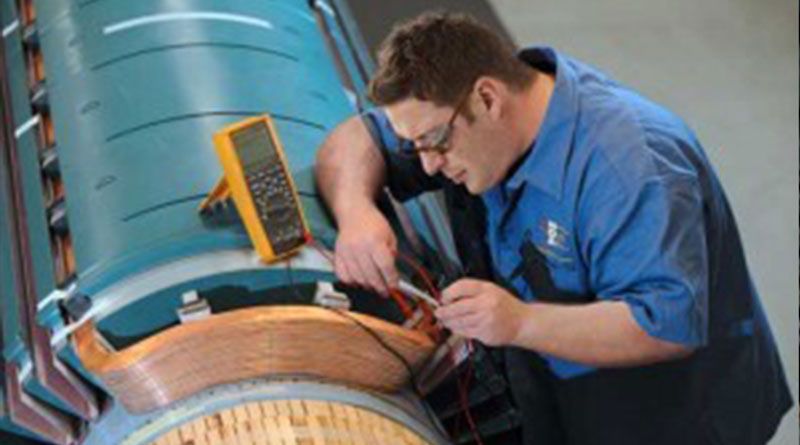Power plants play a significant role in the generation and distribution of electricity throughout different industries. Every power plant essentially includes other generators that focus on converting mechanical power into electrical power.
A significant portion of the generated primary energy like fossil fuels is used for electricity conversion. The rest is used in transportation, industry, and domestic elements. The types of power plants differ in terms of their source and primary energy, but they face similar demands and challenges.
In the current global society, electricity is a highly sought-after element, and the consumption rate is expected to grow at a 23% rate by 2040. Thus, developers’ primary challenge is designing a grid that would produce, manage, and store electricity, meeting the rise in demand. Essential designing elements in power plants’ electrical systems include switchgear, interconnection, power distribution, and transformation, with emergency-response capability.
The challenges that the power plant engineers face in the electrical design include power quality, power supply, and asset management. InThis article would learn about the different electric design challenges that Power plant generator services face.
Power quality
The conventional output of utility power quality does not come with a 100% reliability guarantee. Users who pay a premium amount for electricity consumption get a higher power supply but at 100% capacity.
The plant engineers notice unexpected outages and system failures in the power plants despite preventive steps and frequent intensive diagnoses. The power plants’ utilities use advanced software and hardware power distribution systems and substations. But, factors like lightning strikes, transmission faults, simultaneous equipment operation, and fault in the distribution system switching cause power disturbances.
In terms of the grid design, issues related to grounding and wiring can cause power supply disturbances. As a result, users experience spikes, outages, overvoltage, under-voltage, sages, noises, and surges.
Plant engineers face the challenge of handling the disturbance duration; surges last for some microseconds and, outages last for hours.
To deal with this issue, plant engineers require a reliable and well-managed plant electric system that generates emergency power equipment. Devices like UPS and auxiliary generators supply backup power.
However, experts suggest the requirement for a cogeneration system for generating energy through heating waste. This is a more economical solution to combat the additional challenge of lack of power plant maintenance funds in several societies.
2. Harmonic currents
Harmonic currents generated from power supplies can cause interference and sensitive equipment failure. This electrical issue has been in the electrical industry for years; it has recently grown as a significant challenge in impact and proliferation.
Therefore, electrical engineers are focusing on using technology to reduce the influence of harmonics in the power plant output. Some power plants employ solutions like harmonic current filters for this purpose.
During the electric design, the engineers focus on adding main chokes and effective filters to the variable speed drives (VSDs) to maintain stagnant and unadulterated sinusoidal waves. To reduce the high-frequency electric noise, it is essential to use high-quality toroidal transformers and SMPSs (switch-mode power supplies).
3. Smart Asset Management
In power plants, the popularity of advanced technology and power generation resources has grown in popularity. Power plant engineers have an increasing need to upgrade aging grids, maintain grids with grid hardening against geomagnetic disturbances and other weather-related issues.
Smart grid technology is growing in demand for its highly reliable design and capacity. It is expected that the market value of this technology in the global market would hike up to $61 billion by 2023. However, electrical engineers notice particular challenges in the power grid integration.
They stress the need for grids to withstand physical threats and cyberthreats and quicker system recovery from such attacks. Managing the entire system for reliable performance would aid the energy supply generation. Thus, proper monitoring tools, assessment tools, cybersecurity, weather-guard response, and system reliability improvements are essential.
4. Dependable power supply
Power supply mainly deals with providing a sufficient amount of electricity to meet the facility’s load. The power supply should support the desired grade of power quality, especially during emergency conditions and curtailments. This management is necessary to ensure a secure power supply during essential processes and equipment. This further confirms the protection of the personnel as well.
Electrical engineers in power plants focus on this highly in electric design to equip it with load requirement sensing capability. Usually, this is a significant challenge in power supply facilities.
For this purpose, the plant engineers must evaluate the facility’s load profile. Later, this would act as a reference for the management team for inspecting the power consumption in different time intervals.
Several plant engineers utilize demand charts to analyze the load pattern or metering systems to draw peak usage data.
Conclusion
Understanding the challenges in electric design is essential for plant engineers to create a better design. Since electricity is a significant element in the operation of a power plant, both in terms of output and internal operation, this evaluation is crucial.

Namaste UI collaborates closely with clients to develop tailored guest posting strategies that align with their unique goals and target audiences. Their commitment to delivering high-quality, niche-specific content ensures that each guest post not only meets but exceeds the expectations of both clients and the hosting platforms. Connect with us on social media for the latest updates on guest posting trends, outreach strategies, and digital marketing tips. For any types of guest posting services, contact us on info[at]namasteui.com.

